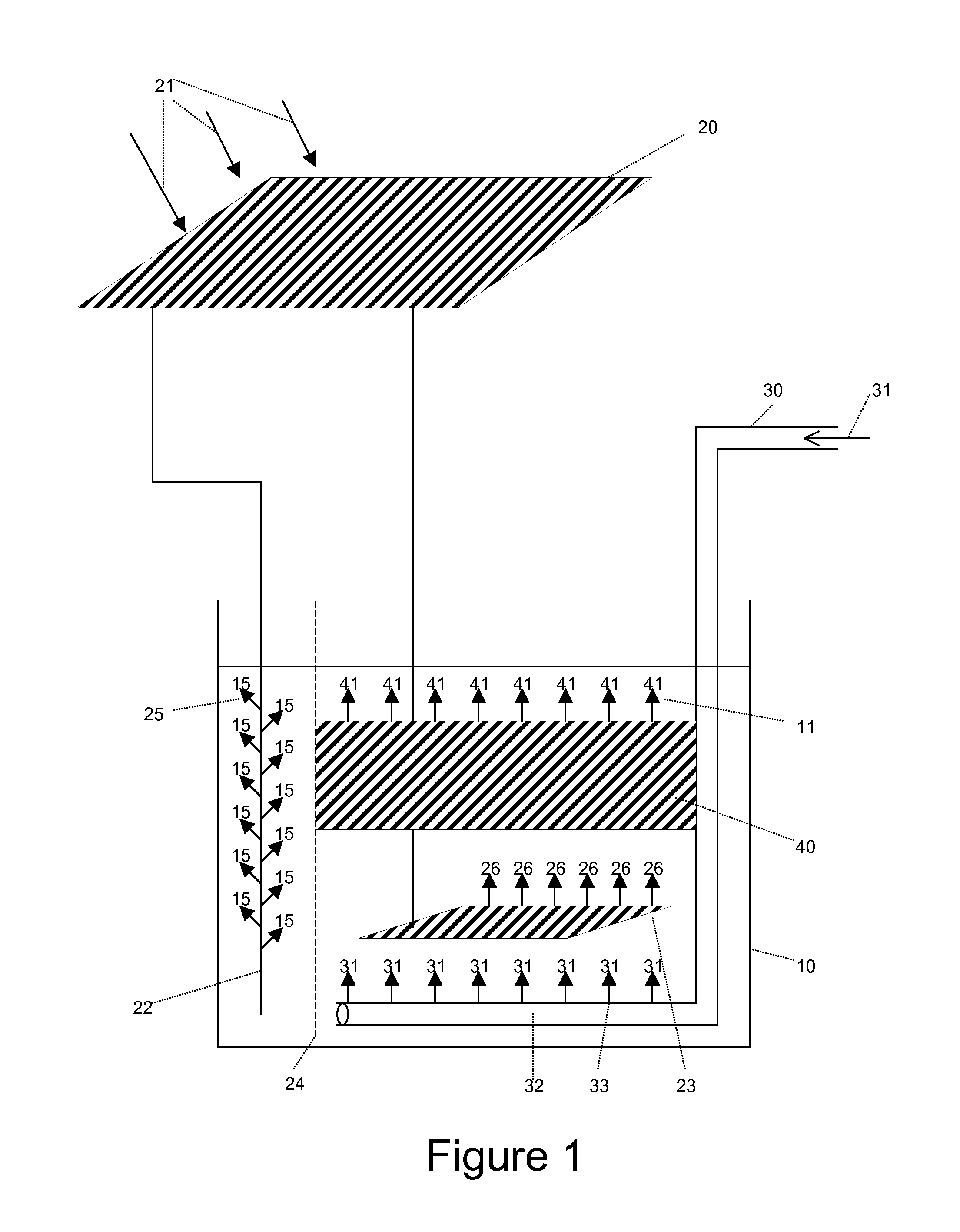Artificial photosynthesis
a technology of artificial photosynthesis and photosynthesis, applied in the field of artificial photosynthesis, can solve the problems of plant inefficiency in converting solar energy to organic molecules, plant specific conditions, and mankind's dependence on natural photosynthesis for its energy supply,
- Summary
- Abstract
- Description
- Claims
- Application Information
AI Technical Summary
Benefits of technology
Problems solved by technology
Method used
Image
Examples
Embodiment Construction
[0017]Several processes are known in which a carbon source is reacted with hydrogen to form a carbon-containing compound having greater energy content than the carbon source itself.
[0018]An example of such a process is the Sabatier reaction:
CO2+4 H2→CH4+2 H2O (1)
The Sabatier reaction is being studied for its potential to supply energy to manned space missions to the Mars. Hydrogen would be supplied from earth, to be reacted with Martian carbon dioxide in a miniature chemical plant.
[0019]The reverse water shift reaction produces carbon monoxide from carbon dioxide and hydrogen:
CO2+H2CO+H2O (2)
As indicated by the double arrow, this reaction is reversible, and proceeds to an equilibrium.
[0020]The Bosch reaction:
CO2+2 H2→C+2 H2O (3)
can be seen as a two-step reaction, the first step being the reverse water shift reaction, followed by a reaction of carbon monoxide and hydrogen.
[0021]As is clear from the reaction equations, these reactions require a supply of hydrogen.
[0022]These and ot...
PUM
| Property | Measurement | Unit |
|---|---|---|
| temperatures | aaaaa | aaaaa |
| temperatures | aaaaa | aaaaa |
| temperatures | aaaaa | aaaaa |
Abstract
Description
Claims
Application Information
 Login to View More
Login to View More - R&D
- Intellectual Property
- Life Sciences
- Materials
- Tech Scout
- Unparalleled Data Quality
- Higher Quality Content
- 60% Fewer Hallucinations
Browse by: Latest US Patents, China's latest patents, Technical Efficacy Thesaurus, Application Domain, Technology Topic, Popular Technical Reports.
© 2025 PatSnap. All rights reserved.Legal|Privacy policy|Modern Slavery Act Transparency Statement|Sitemap|About US| Contact US: help@patsnap.com


